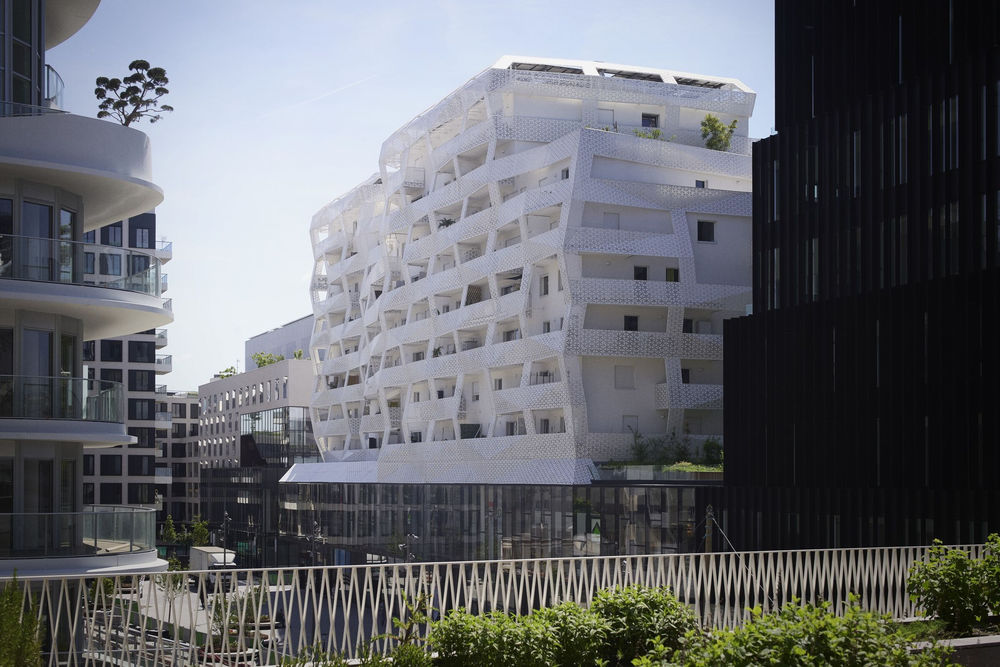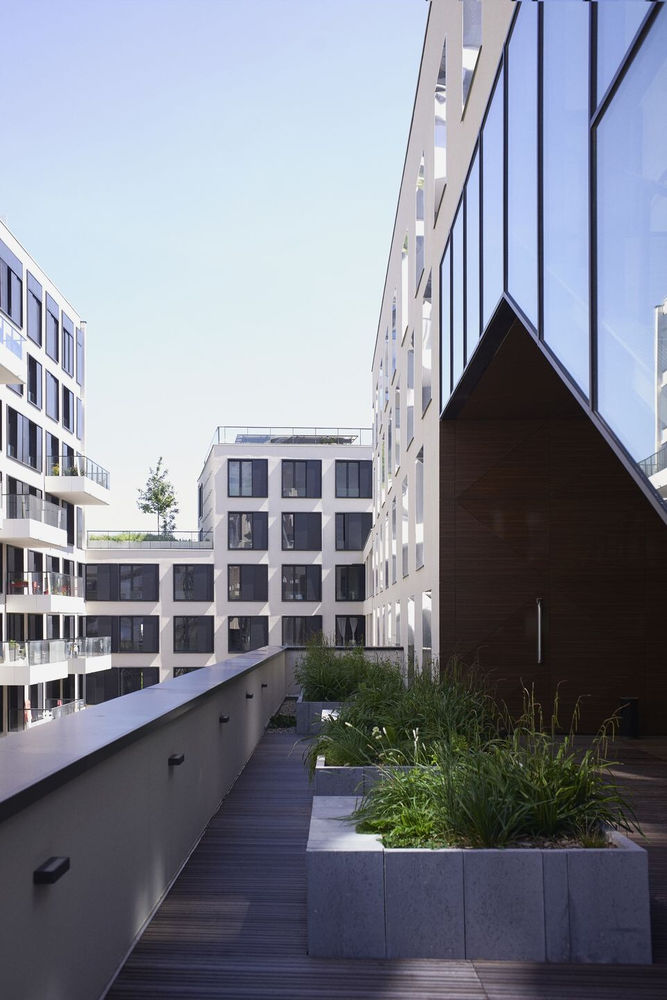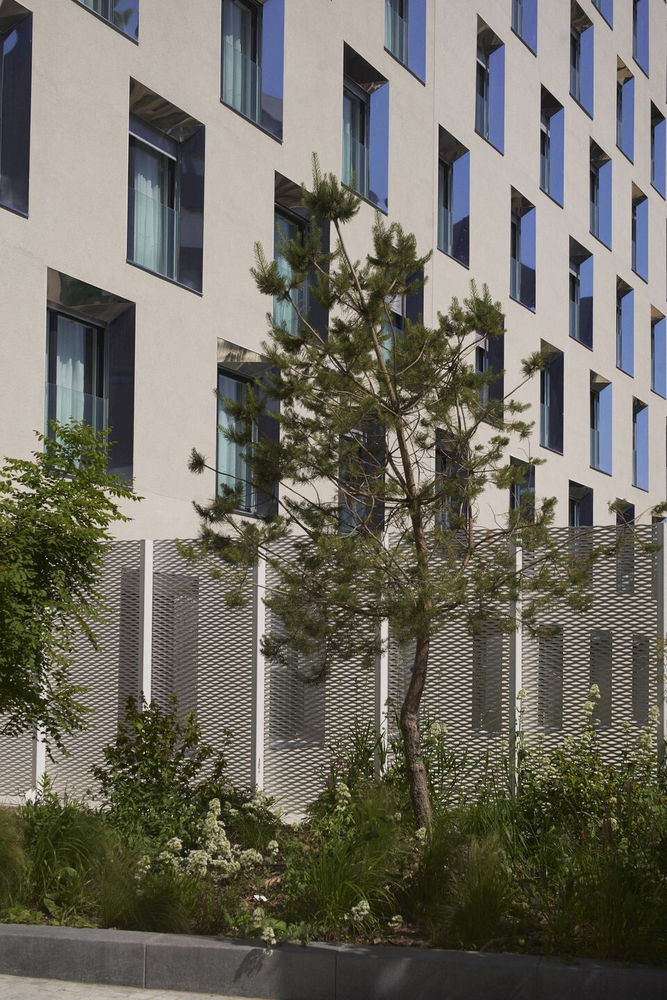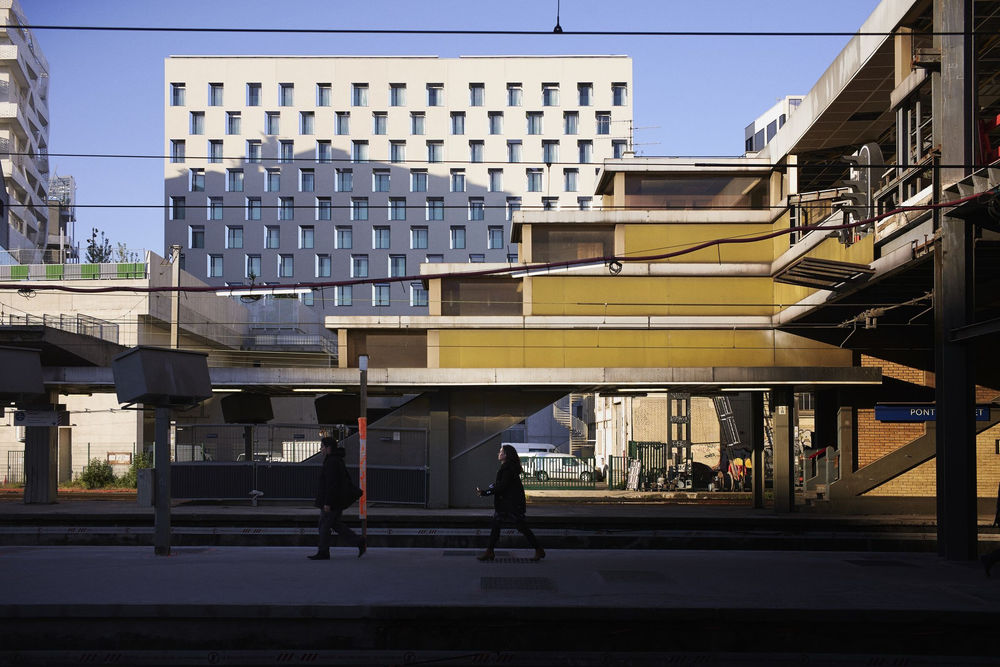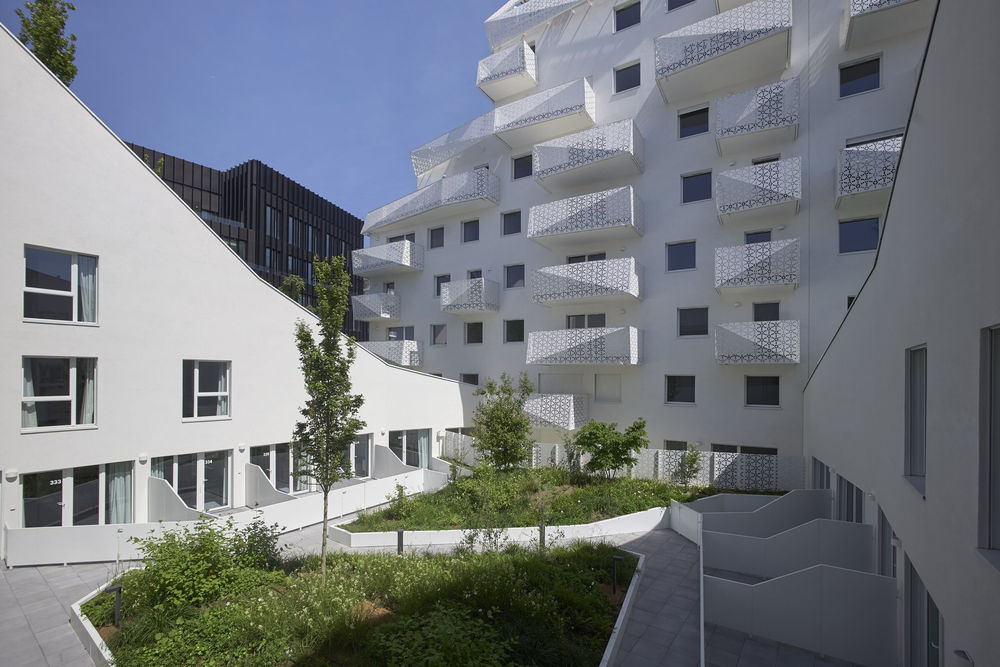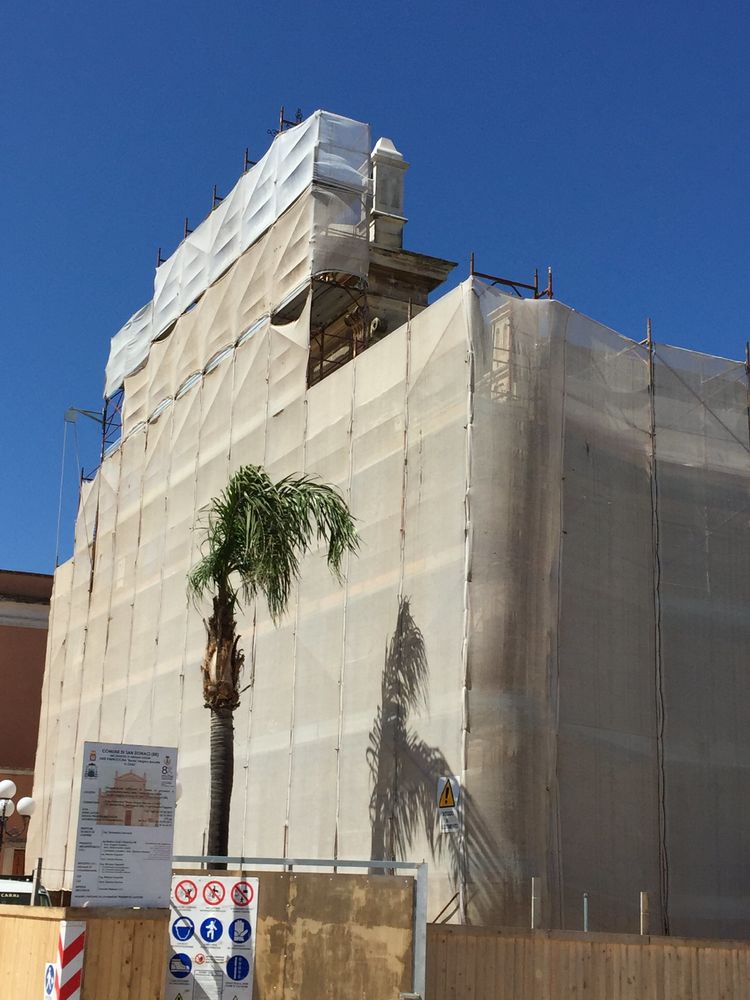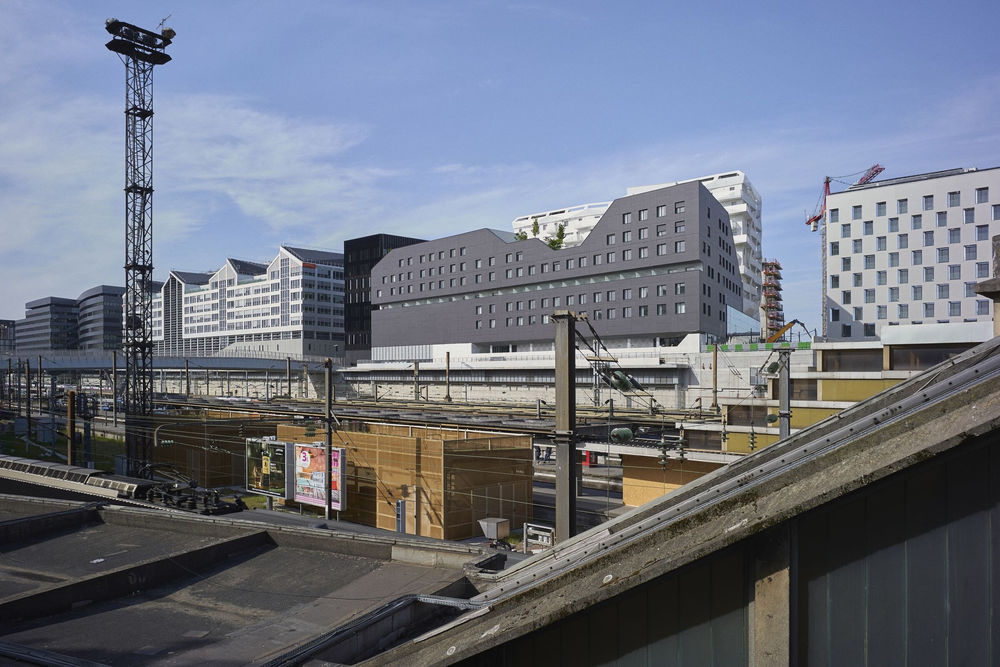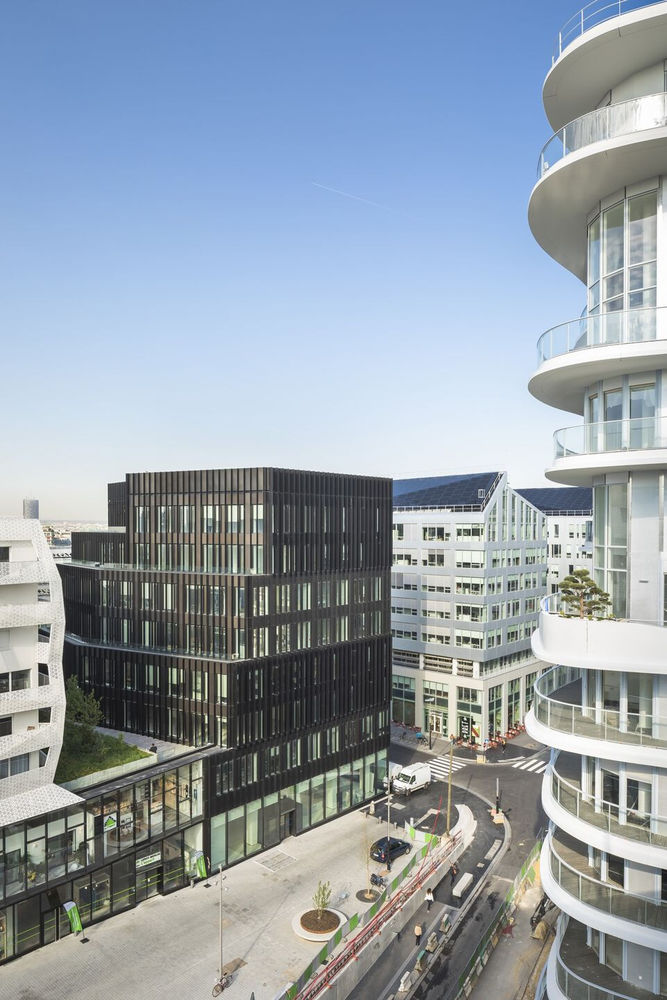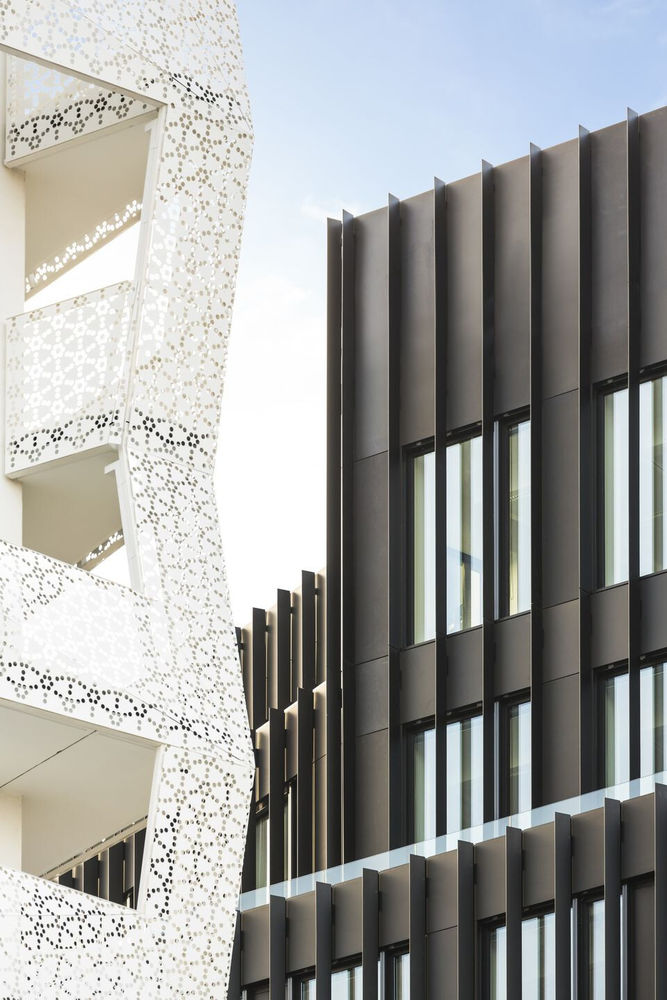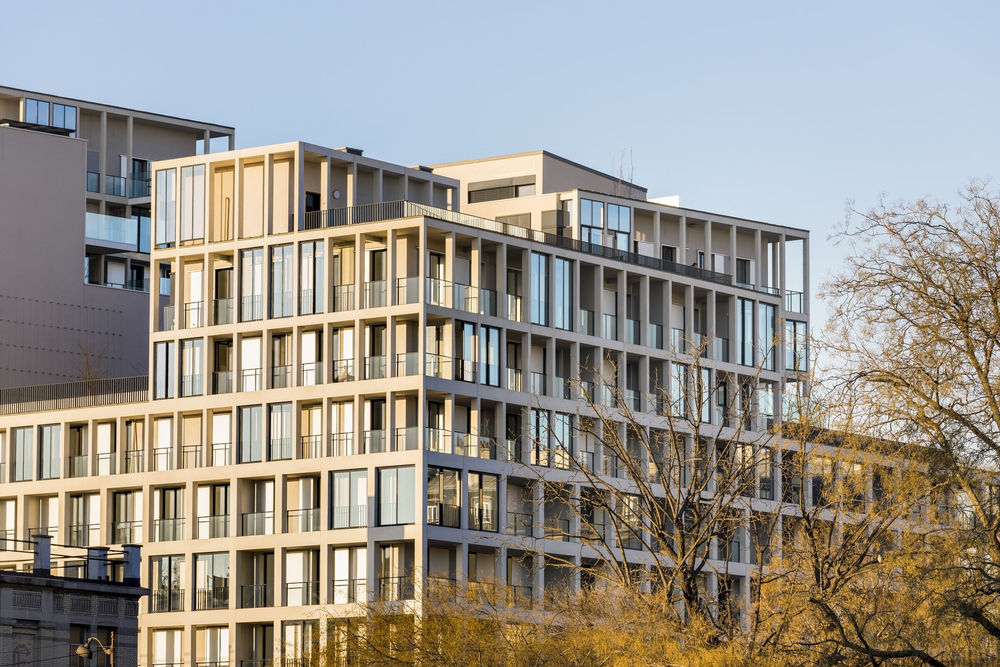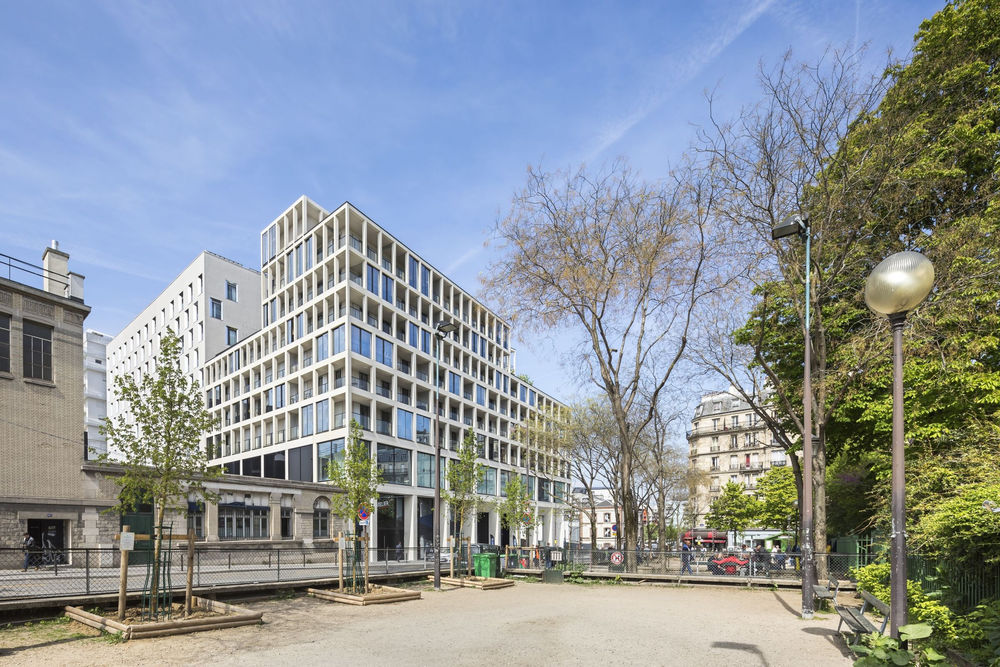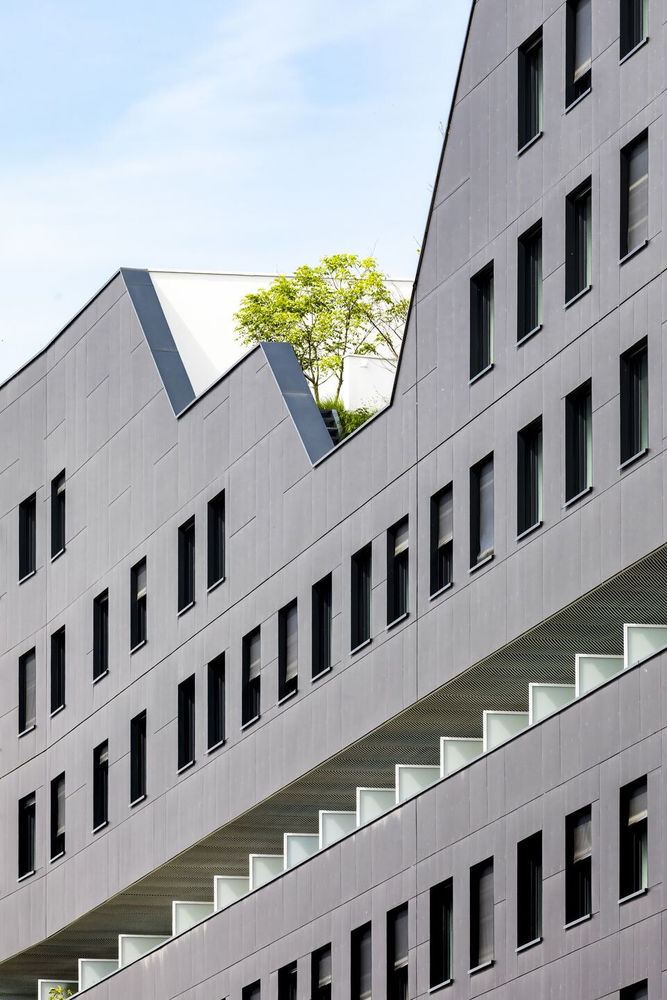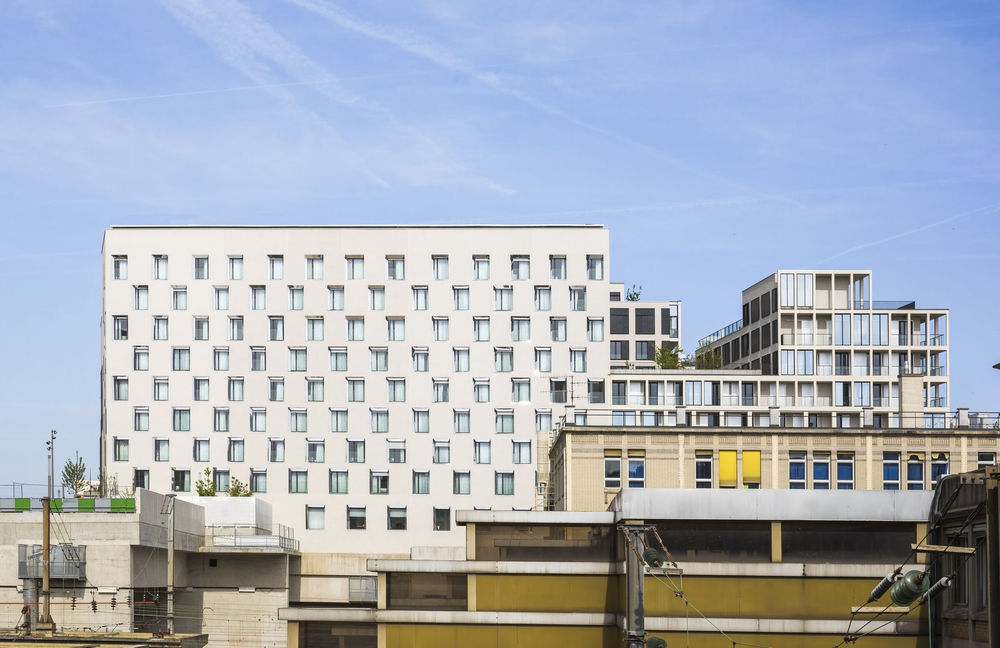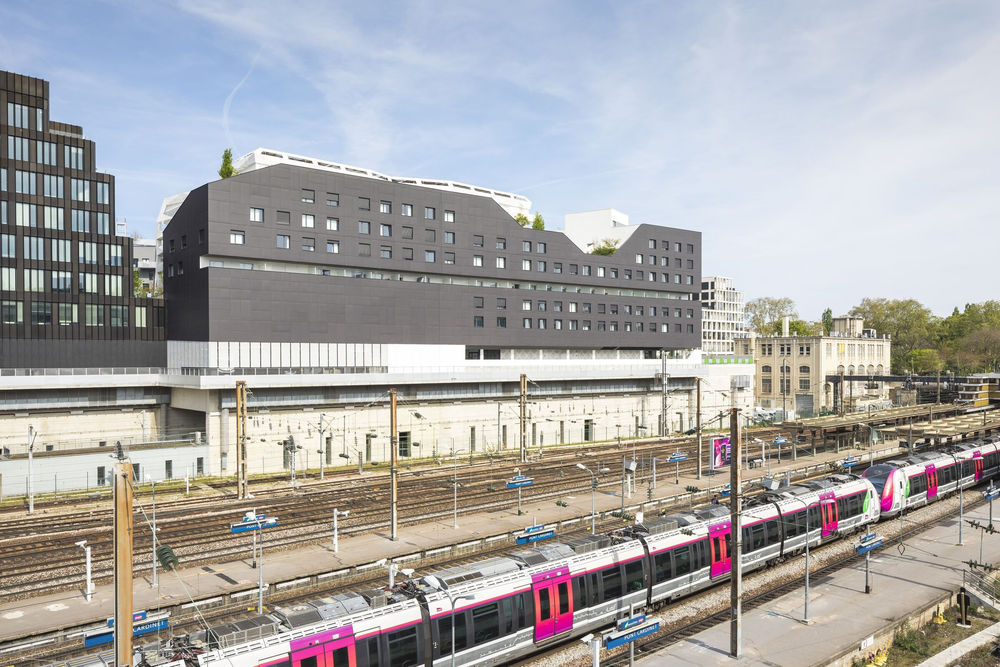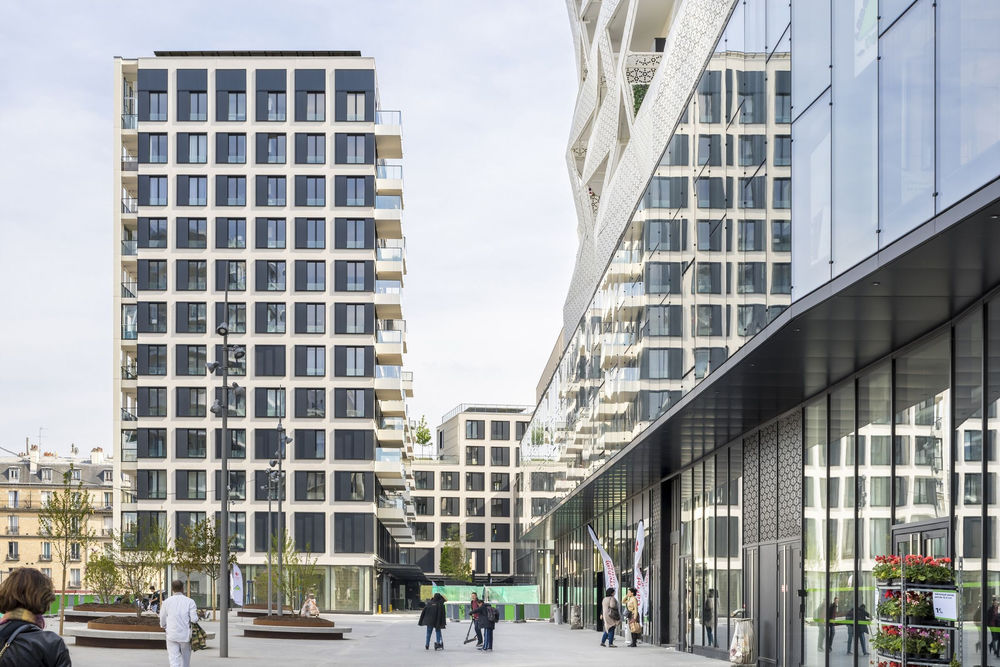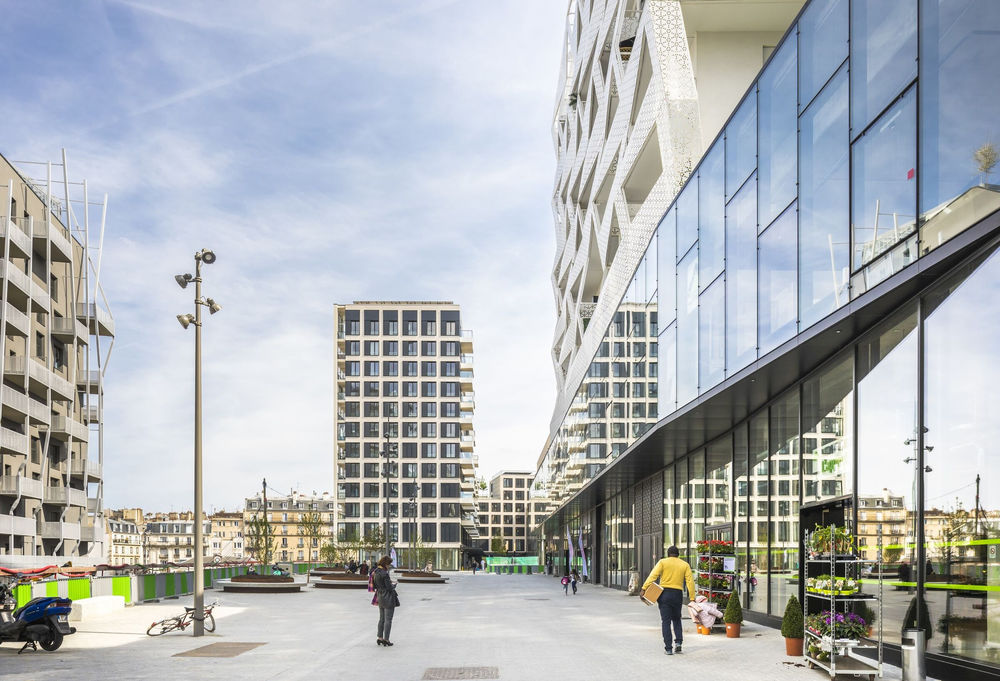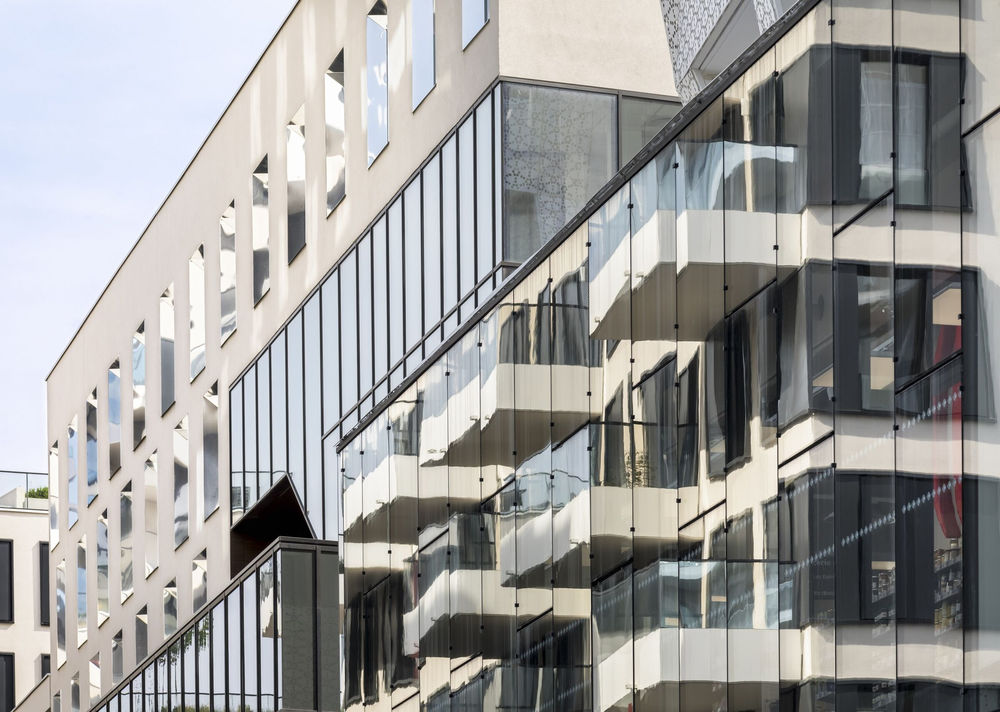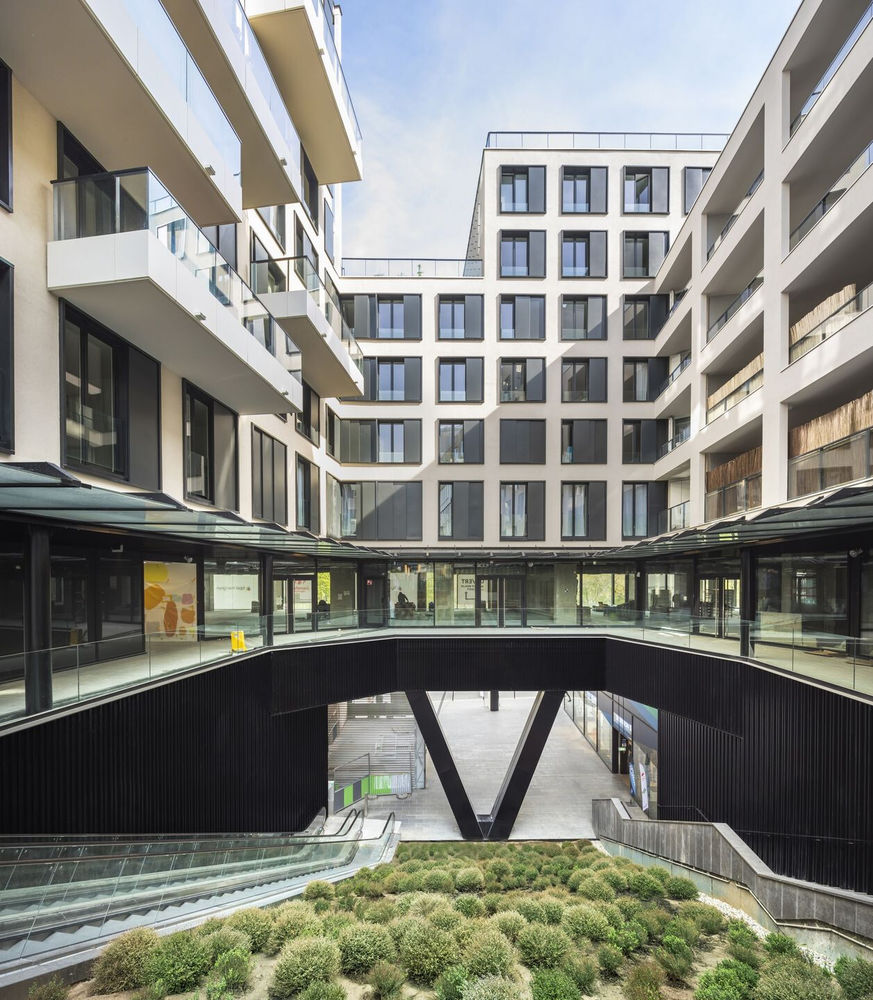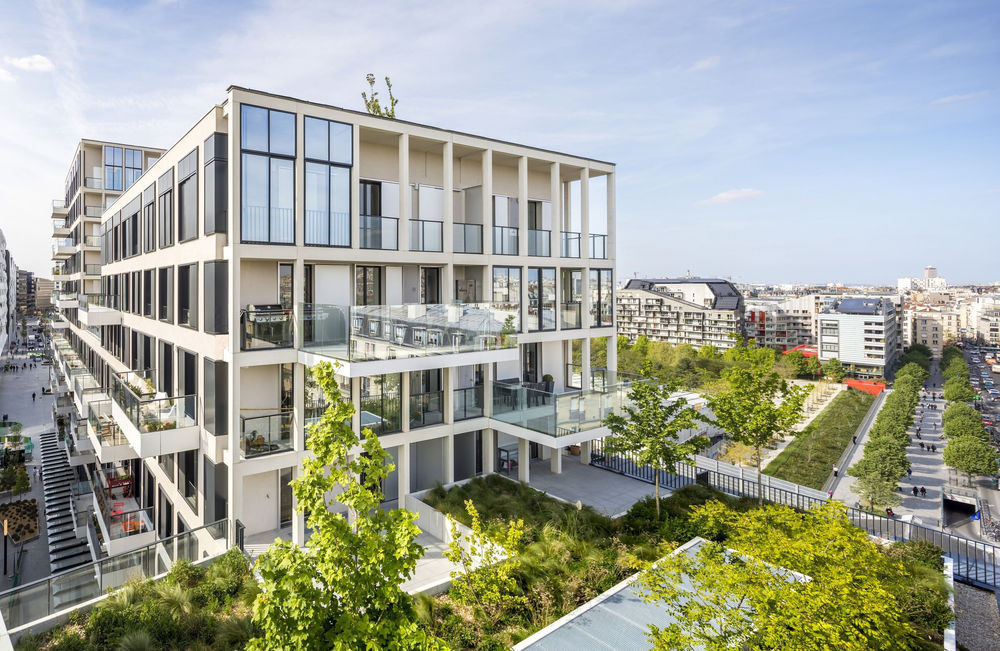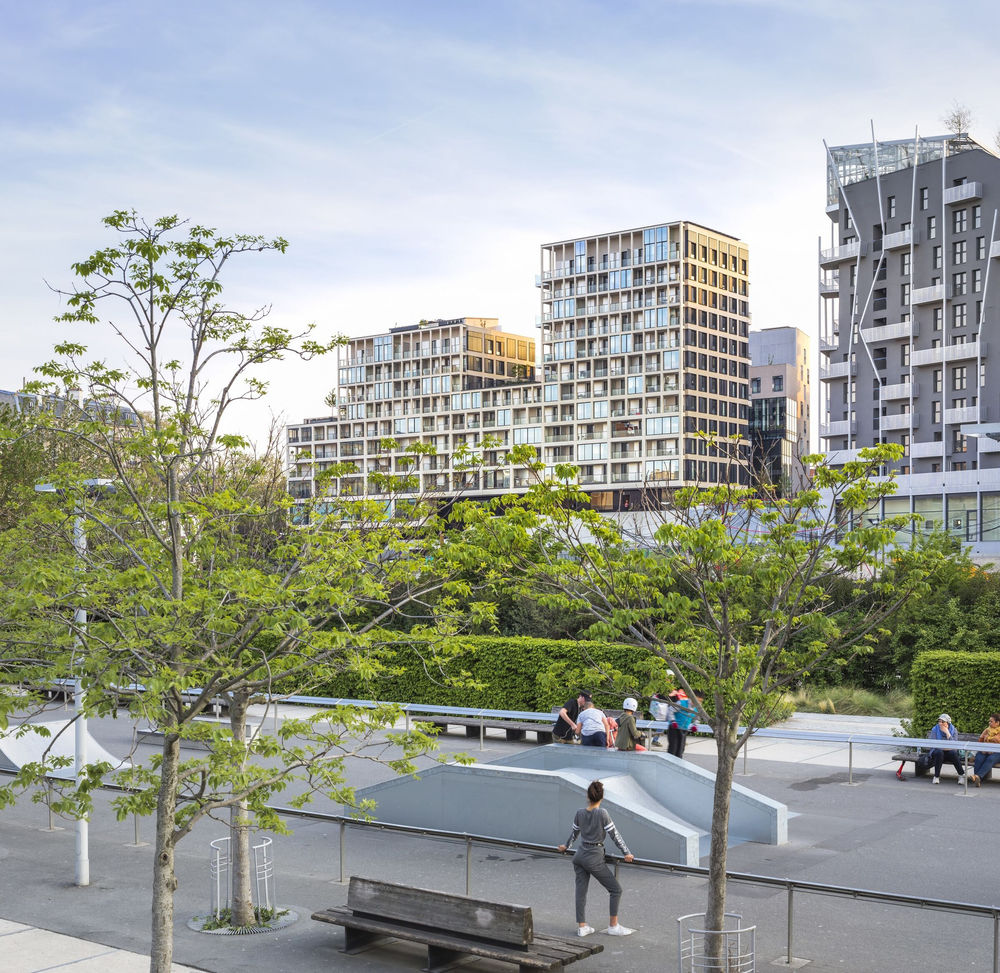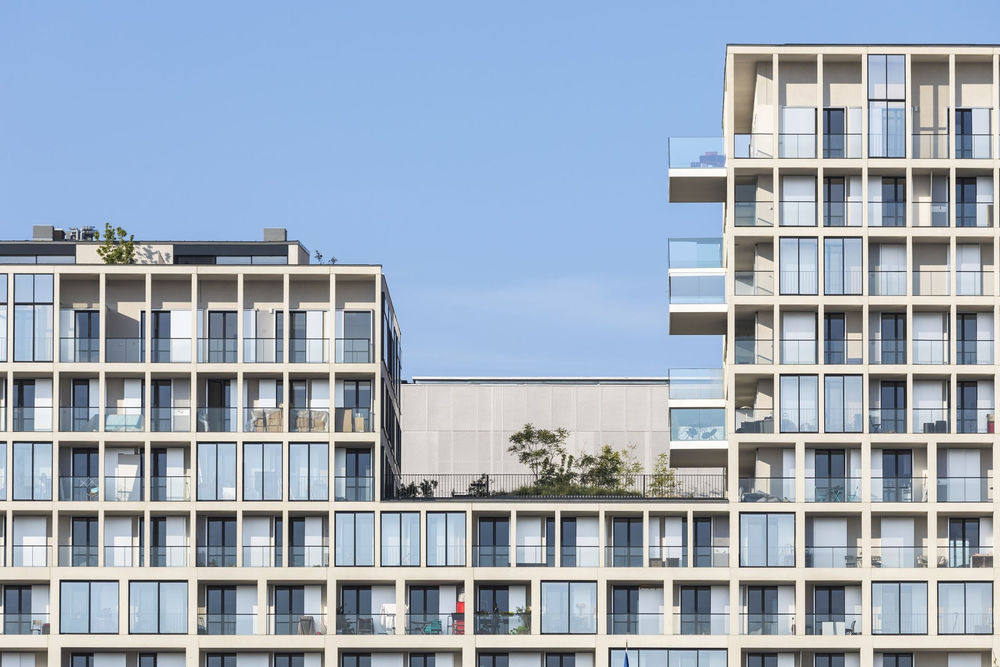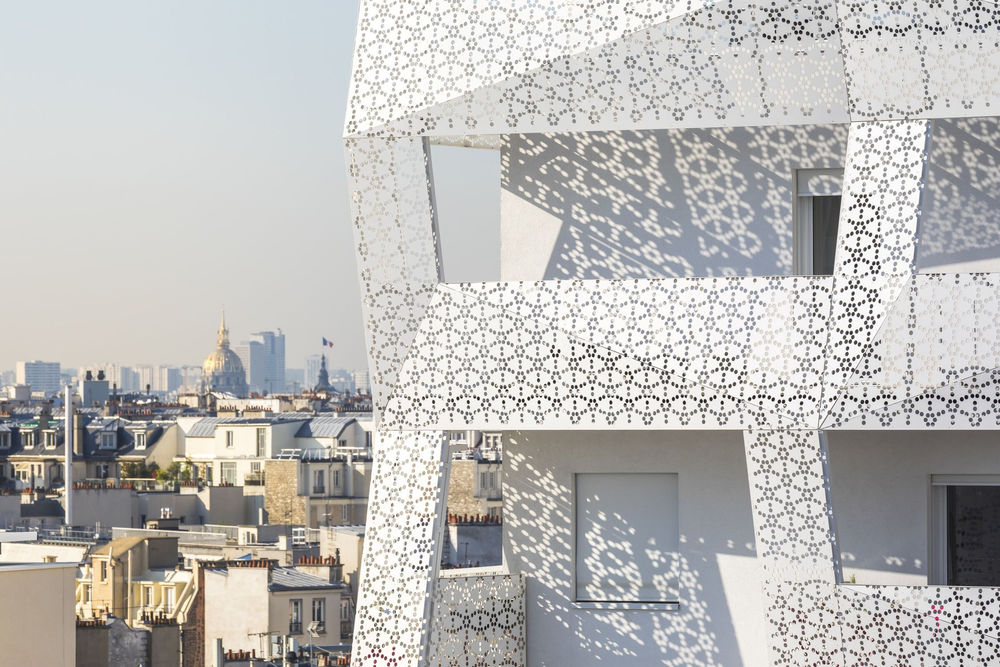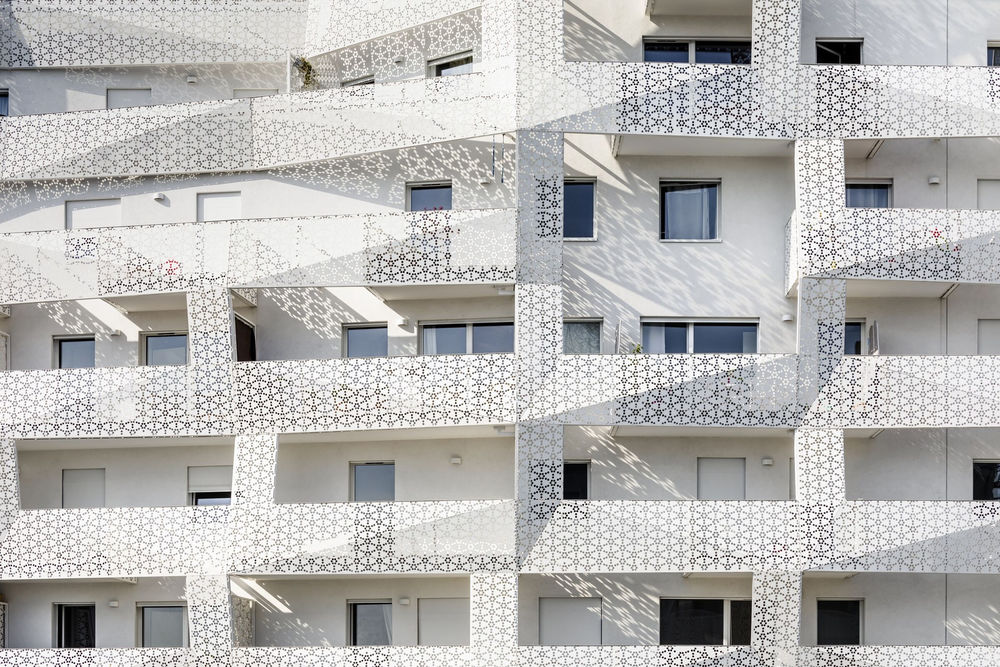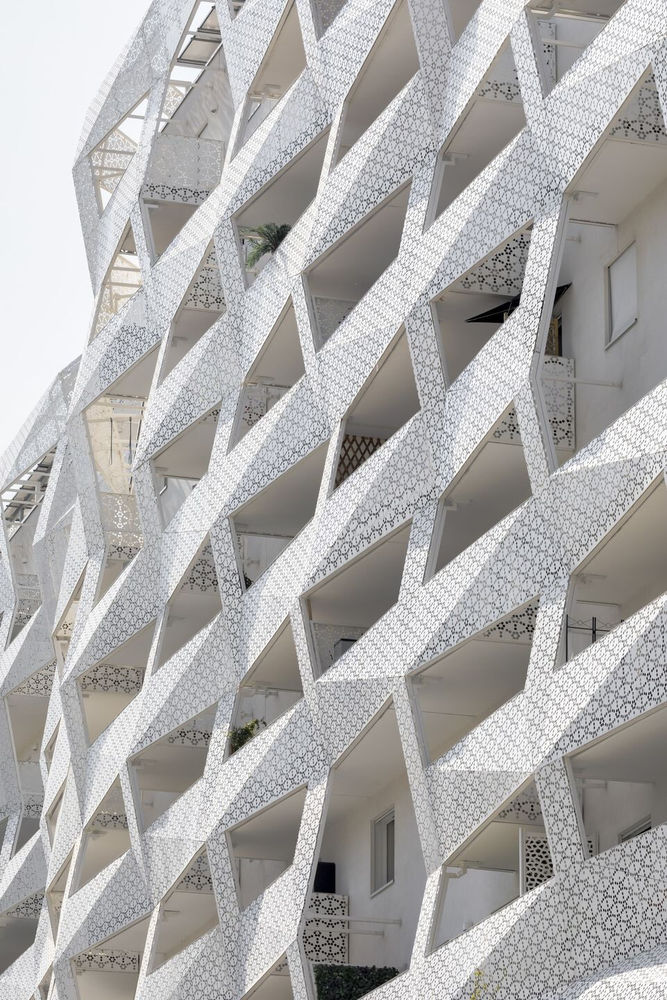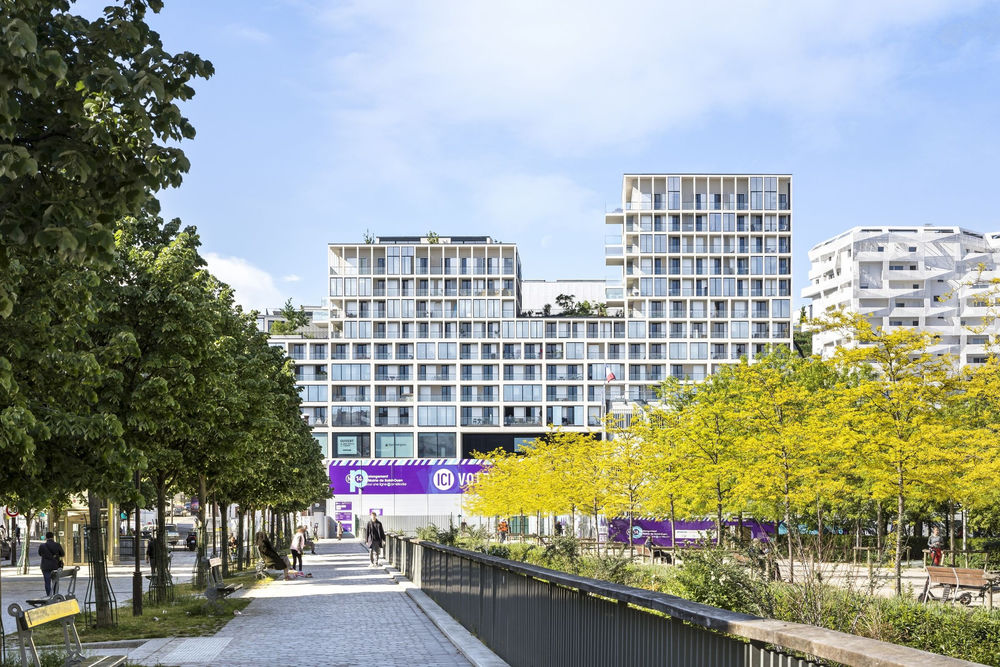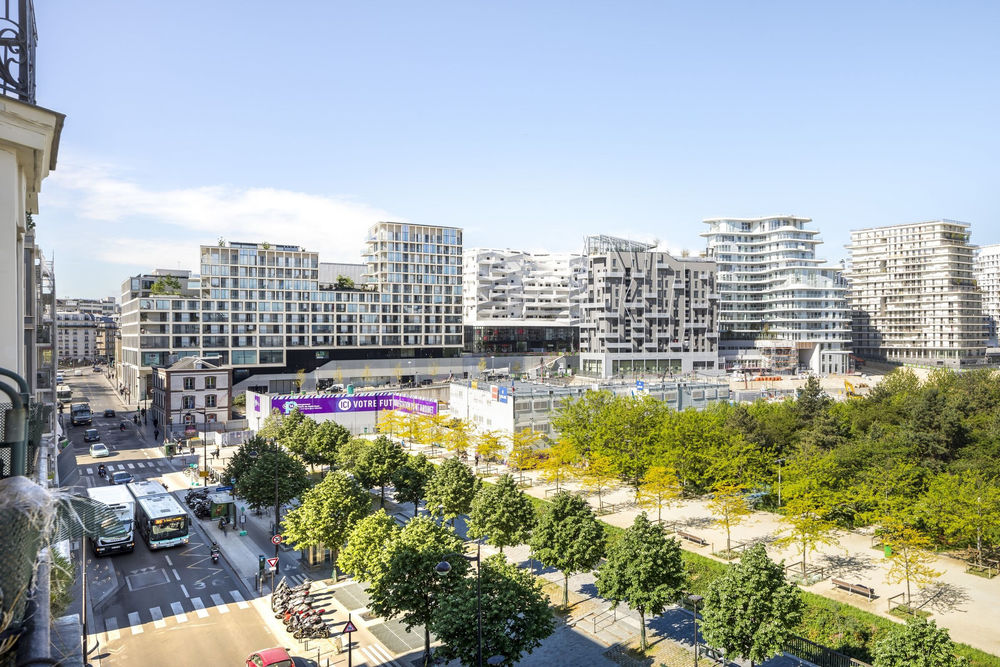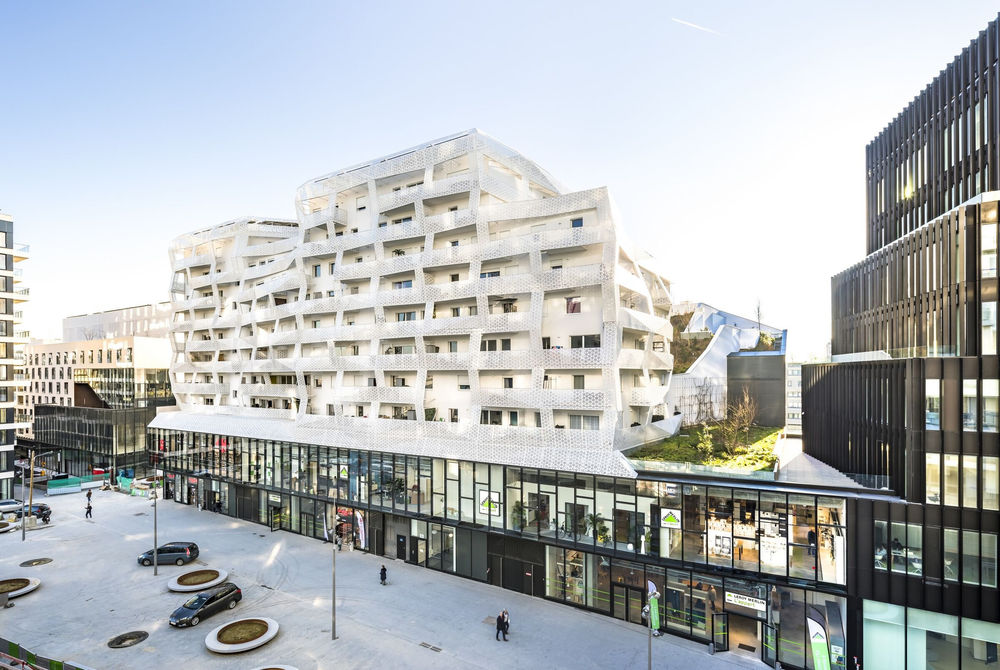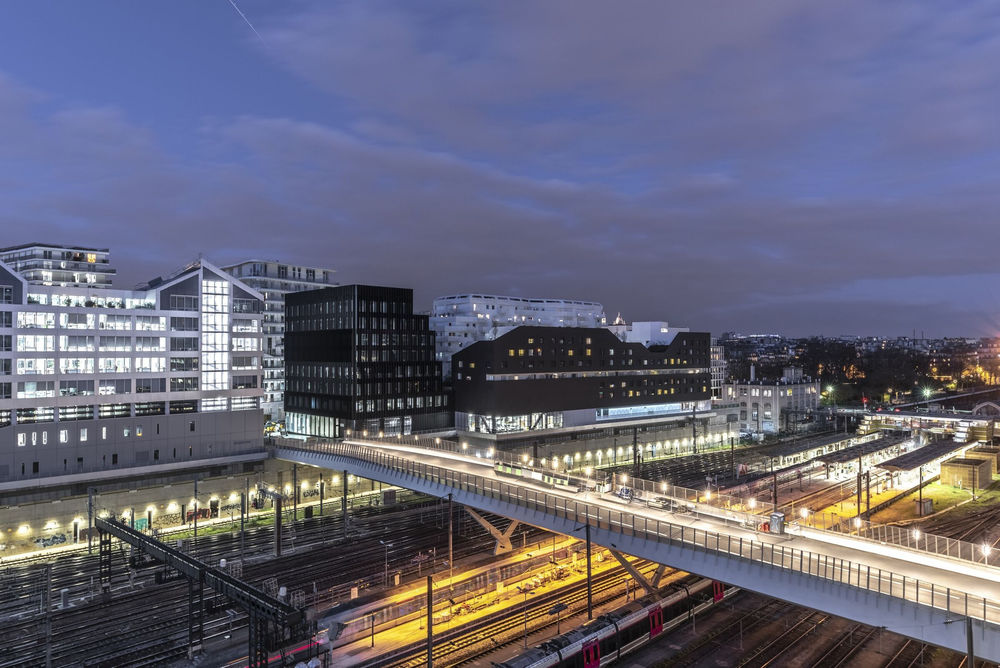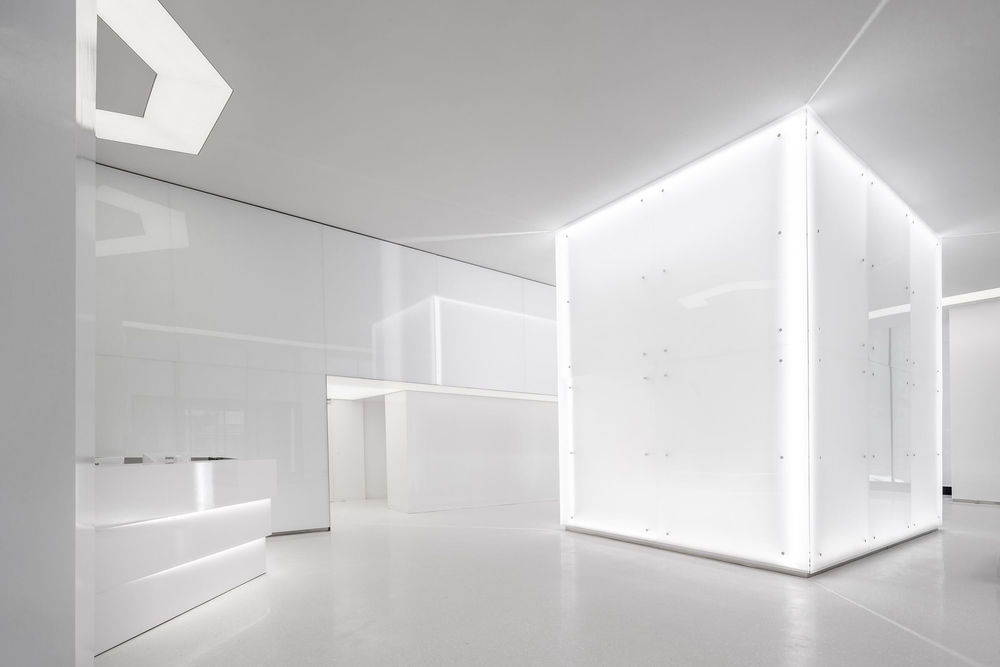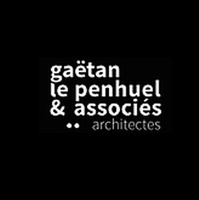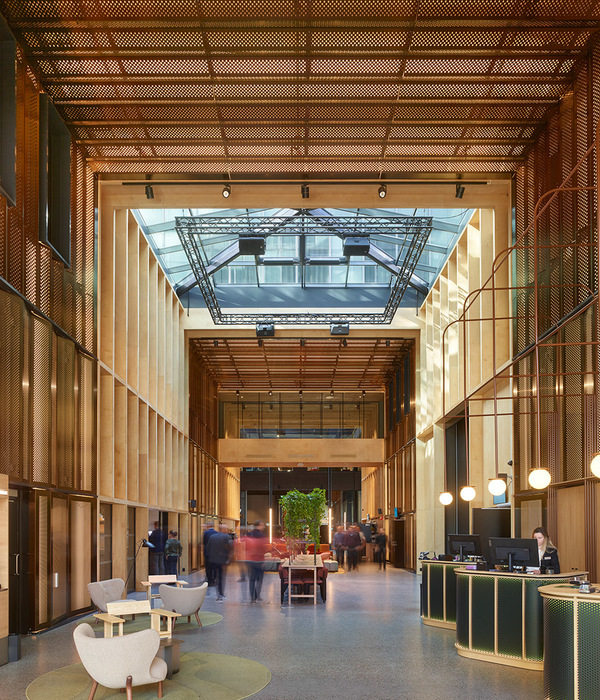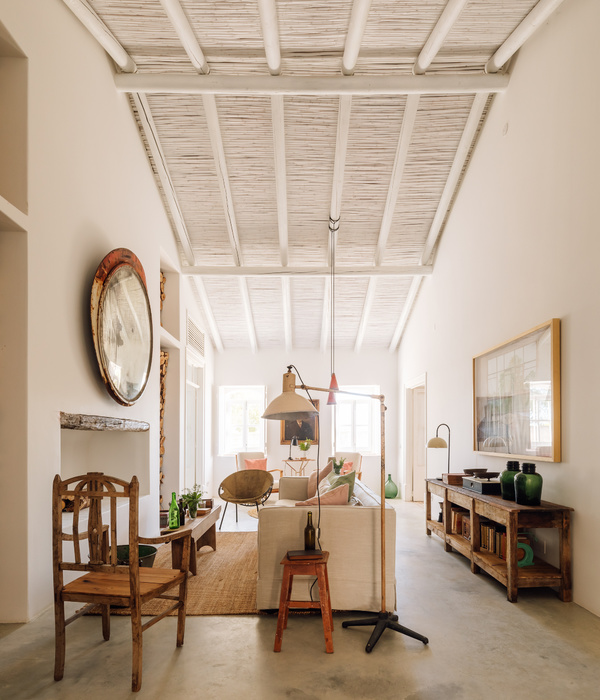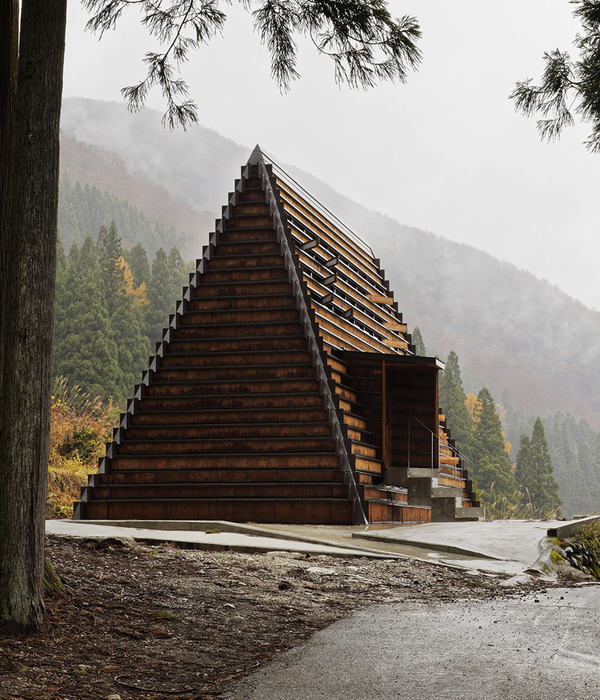巴黎新地标 | Clichy-Batignolles Eco-District 生态区
Architect:Gaetan Le Penhuel & Associés, Architectes;Saison Menu Architectes Urbanistes;ARCADIS Nederland BV;SUD Architectes
Location:Place Françoise Dorin, 75017 Paris, France; | ;
Project Year:2019
Category:Offices;Masterplans;Housing
In the heart of Paris, this ambitious project takes up two large city blocks contiguous with the strategic position between Haussmannian Paris and 21st-century Paris of the Clichy-Batignolles eco-district, for which it serves as the bridgehead. A particular feature of this new district is its generous open urban spaces: the Square des Batignolles, the train tracks and the Parc Martin Luther King. This new development is in fact located at the juncture of beautiful Haussmannian buildings aligned around Square des Batignolles and the new Parc Martin Luther King, bordered here and there by 17-story buildings and dominated by the tallest object on the skyline, the Paris Tribunal de Grande Instance (high court of justice) designed by Renzo Piano, which rises to 180 meters (590.55 ft) above the park.
Fully aware of the break in scale imposed on the new ZAC (joint development zone), one of the aims of this project was to ensure a gradual transition between these two centuries through a modulation of volumes in order to connect the two scales. This explains why skyline of the first block, with the sober framework on the white concrete façades, which echo the cut stone of 18th and 19th century Paris. Further beyond, on the second city block, the volumes are sculpted into more contemporary shapes with the latest materials proclaiming the main objectives of the new district.
This project, overlooking what remains of the footprint of the historic railyards leading to the Gare Saint-Lazare, is highly complex in several ways. In particular, it is composed of a wide variety of programs, which are for the most part standing atop an artificial ground at 10 meters (32.8 feet) above the rue Cardinet. Thus, the project is designed to reconcile all the components of a mixed-use program, notably by means of superimposition, while also dealing with the connection on the street level between the ZAC and the Haussmannian Paris.
Lot O1 contains large and small commercial spaces, middleincome rental apartments and first-time buyer apartments, as well as a residence hall for doctoral students. There is a 460-place parking garage in the base of the building made available to the entire district. Finally, this block benefits from a Paris subway entrance to the line 14 extension. To revitalize this entrance to the Paris of the 21st century, an initial strategic solution was negotiated with the RATP (subway authority) for the position of the future subway station of the line 14. To facilitate and make its flows profitable, a deal was reached to embed a large shopping mall open to the city and located at the highly visible corner of the rue Cardinet and the rue Rostropovitch. Passenger flows will pass directly into this double-height shopping mall.
This broad plaza, open to the public, opens perspectives on several levels, notably toward the new Parc Martin Luther- King and the century-old Square des Batignolles. It also ensures the fluid transition up to the shopping mall via staircases and escalators while framing the sky in the heart of the block. On the Parc Martin Luther- King side, a long outdoor corridor evokes the staircases on the Butte Montmartre. Overlooking the street, it leads to the new Place Françoise Dorin. The built volumes gradually hew to the imposing skyline of the Batignolles district.
Thus, on the rue Cardinet side, constructions on the corner are aligned with the skyline of Haussmannian Paris. Opposite the new park, they have a crenelated form to transition gradually toward the higher constructions of the new district. The complexity of the program is slipped into a unified and minimalist urban form, thereby leaving open possibilities for mutations of subsequent programs. The first-time buyer housing units are superimposed on the rent-stabilized apartments. The lowest roofs of the development are overtaken by gardens and terraces ensuring the presence of greenery for the closest neighbors and providing the occupants of these privileged situations, exceptional panoramic views over Paris. The highest roofs comprise a very ambitious program of photovoltaic panels to meet the objectives set forth in the brief issued by the ZAC.
The building for doctoral students, overlooking the SNCF rail lines, has a flat façade composed of a series of solids and voids and designed with large bays whose frames are made of a reflective material. The mirror effect plays with perceptions through the interplay of the reflected sky. On the shopping mall side, its façade is comprised of a series of terraces with greenery and which serve as a visual filter to the apartments just opposite. The terrace of the shops continues broadly into the volume and opens a sort of alcove for use by residents.
Lot O3 houses two large retail stores in continuity with the mall in Lot O1, a student residence hall, a young workers’ hostel, social housing units for families and an office building. Located in the heart of the new district, it has a very contemporary sculptural form. The project connects three distinct elements by playing with the contrast between a black monolith along the SNCF railways (the student residence hall and the young workers’ hostel), with inward and outward folds of a white chrysalis, like a giant work of origami (the social housing for families), and ends with the angular bleachers of an anodized bolder, the “cannon barrel” (office building). This form of architectural marquetry is designed to bring a range of uses to life here, which will henceforth be interlaced.
The building containing the social housing for families stands opposite the new park with a hieratic volume that is both sinuous and folded, playing with the shade and perspectives. The program is notably composed of a number of cross duplex apartments offering views toward the north and the south. This is a “chrysalis” composed of a perforated metal envelope with balconies on 3 façades. It folds and unfolds horizontally and vertically to ensure the interplay of light and shadow, when seen close up and from afar. The shadow cast on the façade of the apartments accentuates the effect of depth of field as well as the perception of lightness. A “lace” effect is the objective sought in the interplay of varying perforations according to locations.
The residence hall houses a portion of the horizontal landscape that creates a syncopated skyline stretching along the SNCF railways and then doubles back around the two large green patios, providing the opportunity of a collective living experience for residents. Comprised of terraced green hillocks, the roof of the program contains terraces and ornamental gardens.
Finally, a broad gap makes it possible to distinguish between the programs of the apartment buildings and the office buildings. This spatial arrangement optimizes sunshine for the public areas while also reducing the density of the built areas. This break in the skyline is occupied by the terrace of the office building, which unfolds in a series of stepped terraces with a southern orientation. The volumes are detached at a double height, creating a volume visible from the park and the railways. The lobby on the ground floor, with glazing across its double height on both façades facing the street, offers passers-by a view of its activities and opens perspectives toward the bridge leading to the Saussure development. The striated vertical volume of sun-breaks providing protection from the sun enhances the comfort of users while reducing energy consumption. The sculptural silhouette of the office building offers spectacular views of Paris for the offices it contains.
The base of the two lots, O1 and O3, into which shops are integrated, creates a continuous connection on the ground level between the Square des Batignolles and the Place Haute (new Place Françoise Dorin). A strong pedestrian axis cuts through the block and creates a natural pathway between a lower level and an upper level. Shops are logically integrated along the edges of these pedestrian flows and frame a gently sloping vertical link. To major centralities created on either end - the plaza and the place Haute - were designed to capture these flows, thereby strengthening the transversal axis.
The first centrality, on the level of the Square des Batignolles, is materialized by a plaza broadly open to the rue Cardinet. This double-height space is at the intersection of a number of flows: connection via sidewalk to the Pont-Cardinet Station, link with the railways that frame the square. It is also directly connected to the subway entrance to line 14. This shared plaza also enabled the design of a broad and welcoming entrance to the shopping mall. The porosity of the plaza with the public space of the street is underscored by the extension of the features of the outdoor ground and sidewalk into the indoor commercial space.
Between the two main centralities, of the plaza and the Place Haute, stands a shopping mall at the heart of the city block. Vertical connections (escalators and stairs) frame a green patio on the ground level, which generates a bright and appealing perception from the plaza. Containing approximately 12 shops, the mall is comprised of an exterior circular promenade in full daylight. The pedestrian pathways are protected from inclement weather by a simple glass roof, benefiting from a shutter that filters sunlight and enhances the comfort of users, and creates a setback from the volumes overlooking it.
The second centrality is organized around the Place Haute. This terrace is also at the intersection of a number of flows: 2nd entrance to line 14, end point of the north/ south axis, rising from the park. To enhance its attractiveness, medium-size shops are located on two levels all along this alignment of Lot O3. Anchor stores will be located on the ground level to more effectively sequence the new square side. On the upper floor, shops overhang the square, creating a powerful sales draw from the main street access to the district, just below the Place Haute. This arrangement shelters the pedestrian pathways along the square. Kiosks can be added to further enliven the commercial appeal, resonating with the terrace of the brasserie on the corner marking the entrance to the mall. Like the plaza on the Cardinet side, the Place Haute serves as an anchor and entrance point from the interior street with the same incline and same treatment of ground covering contributing to the visual unity of this destination point.
Lots O3 and O1 are a vast architectural and landscaping project organized around the rue Cardinet, the upper terrace, the new street and the web of railways. In this same development, several urban links create a dialog between these two lots, to which their respective aesthetics attempt to provide a response. All locations are used in a way that maximizes the best of both worlds: the density of a combination of programs with a high number of mixed uses and the preservation of the intimacy and comfort required by the housing units.
A vast base comprised of a shopping mall, a strong spatial relation between lots O1 and O3, weaves the relations between the public and private spaces of the programs. Green roofs of lot O1 ensure the presence of greenery for the neighbors and offer occupants exceptional panoramic views of Paris. All the roofs of lot O1 are of the “roof-terrace” type, which is to say with planted gardens. Whether collective or private, they are both ornamental gardens and living spaces with the potential for sharing.
The landscaping of lot O1 is comprised of:
- A full-ground space located inside the city block, in the heart of the shops.
- Landscaped gardens on the plaza located at varying heights.
The artificial topography created by the roofs of lot O3 enabled the creation of links between the buildings on the south side (student housing) and the north side (family housing). A terraced landscape enlivens the roof and offers a pleasant view to the social housing units just opposite. The green roofs are enhanced by the presence of a series of bleachers.
The landscaping of lot O1 is comprised of:
- Landscaped roofs in flat and undulating sections (slope of 30° to 45°).
- Two patios located in the hollows of these preceding roofs.
- A “wooded fracture” located between the housing and the office building.
- A terrace with a wooden deck that can be reserved for the students.
Green spaces have a privileged role to play in this development, in compliance with the Paris plan for biodiversity, with regional plants adapted to the fauna of the Ile de France. The ranges of trees, bushes and creepers, perennials and seasonal plants were chosen to favor honeybees and for their capacity to produce flowers, fruits or grains likely to integrate well into the food chain of Parisian environments, or to serve as places for laying eggs.
Trees were mainly chosen from a list of indigenous or naturalized plant species (distribution principle applied: 60% local plants, 40% acclimated plants). Generally speaking, most of the plants present require less water. The landscaping project is one of a grass “carpet” punctuated by trees and bushes.
▼项目更多图片

